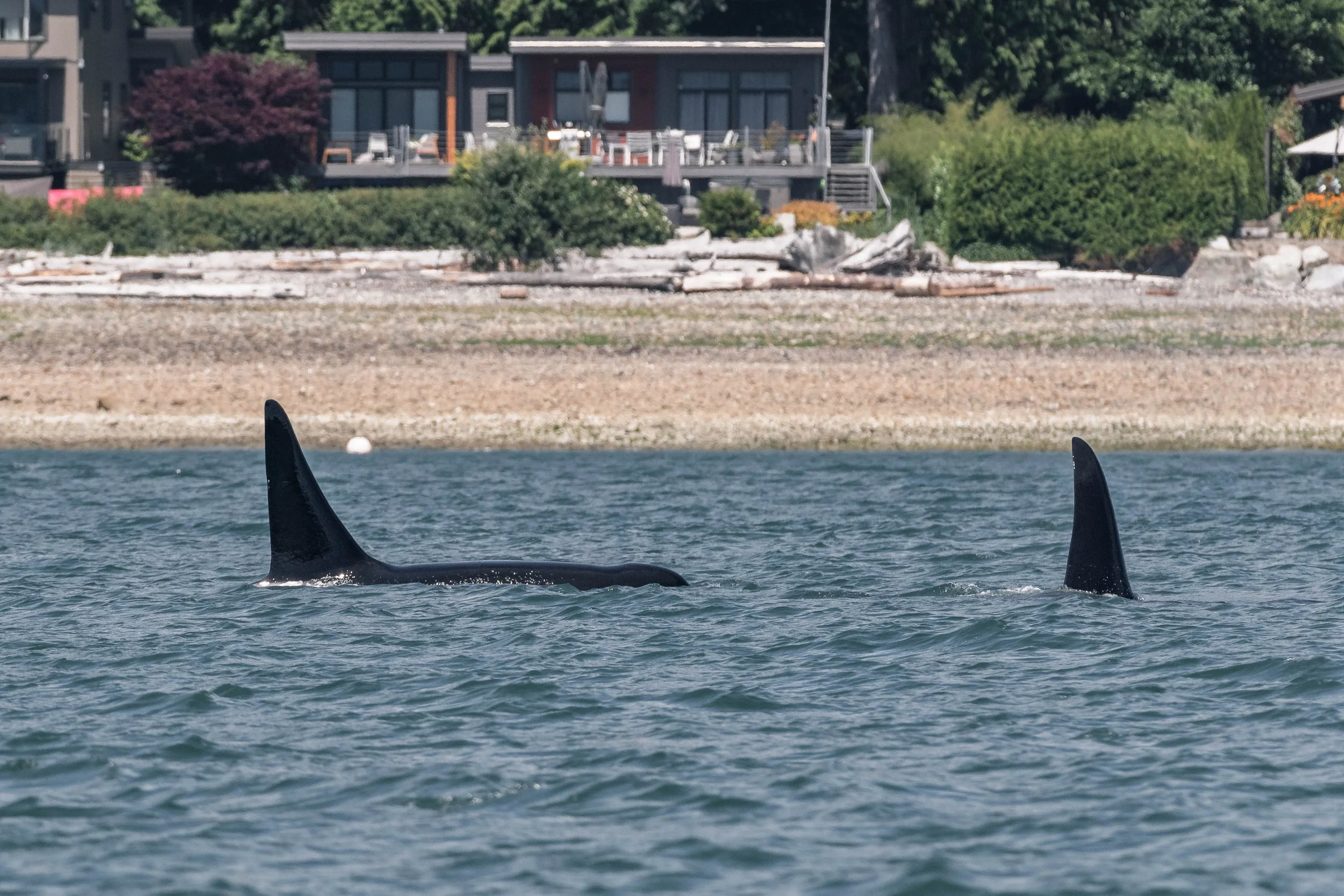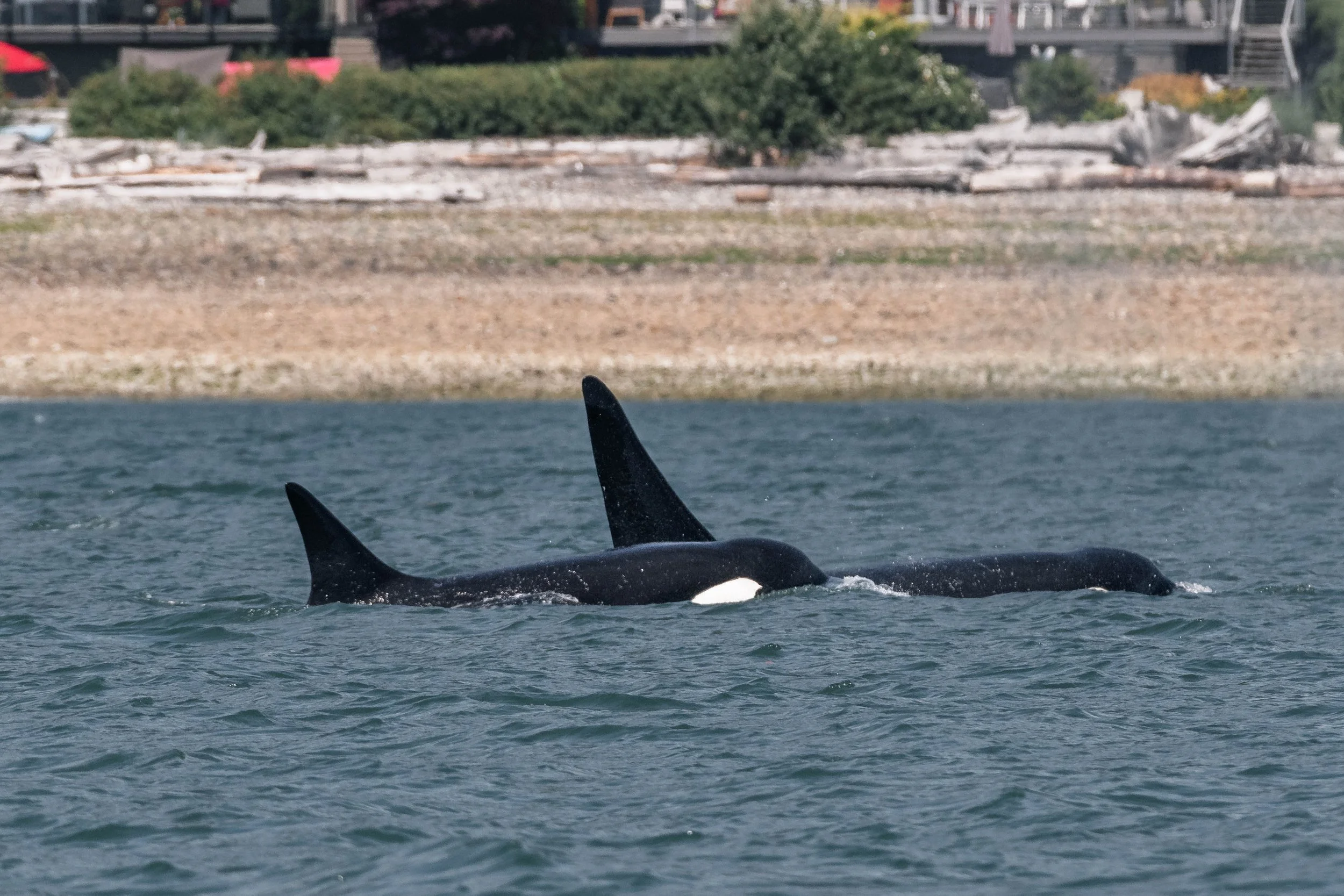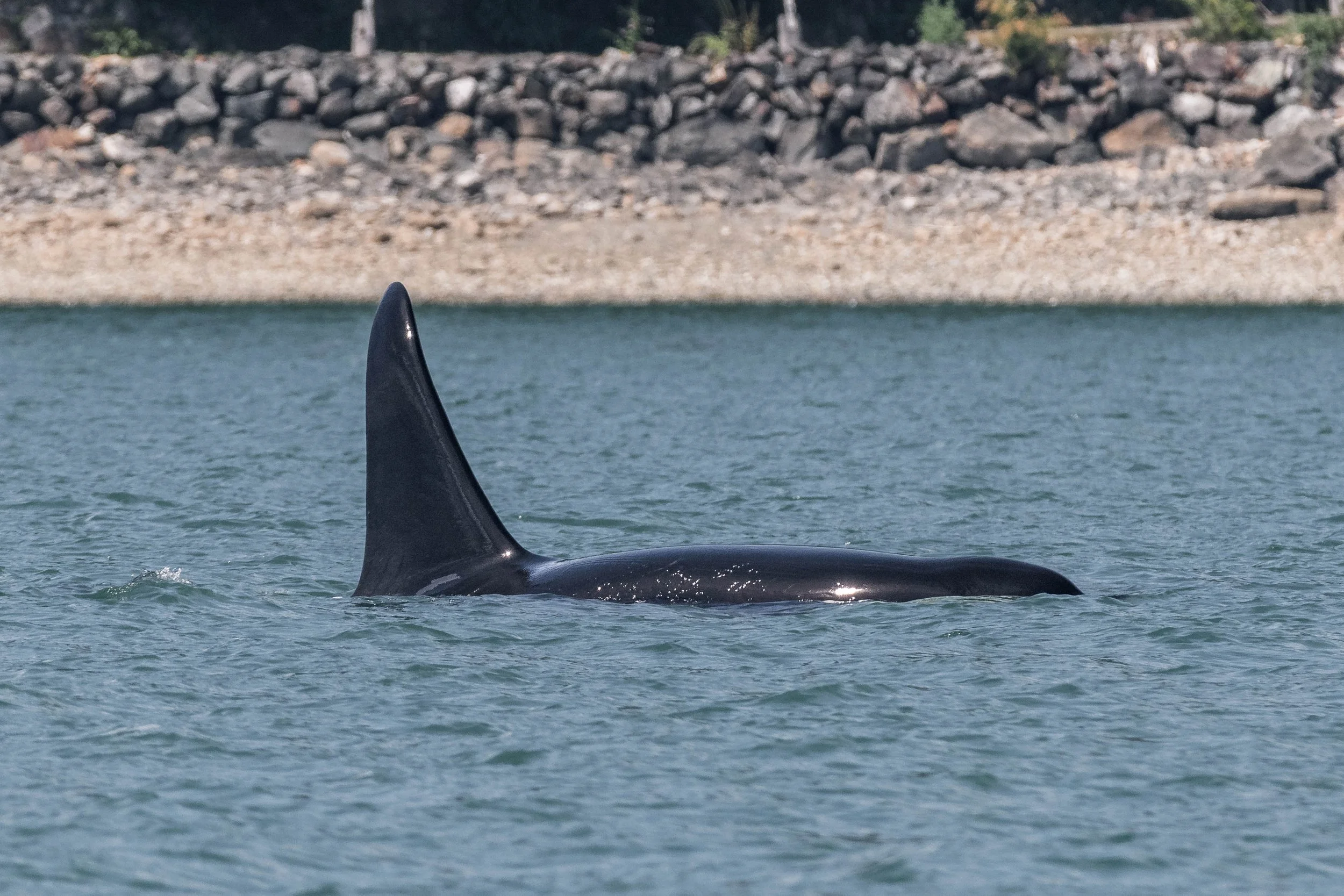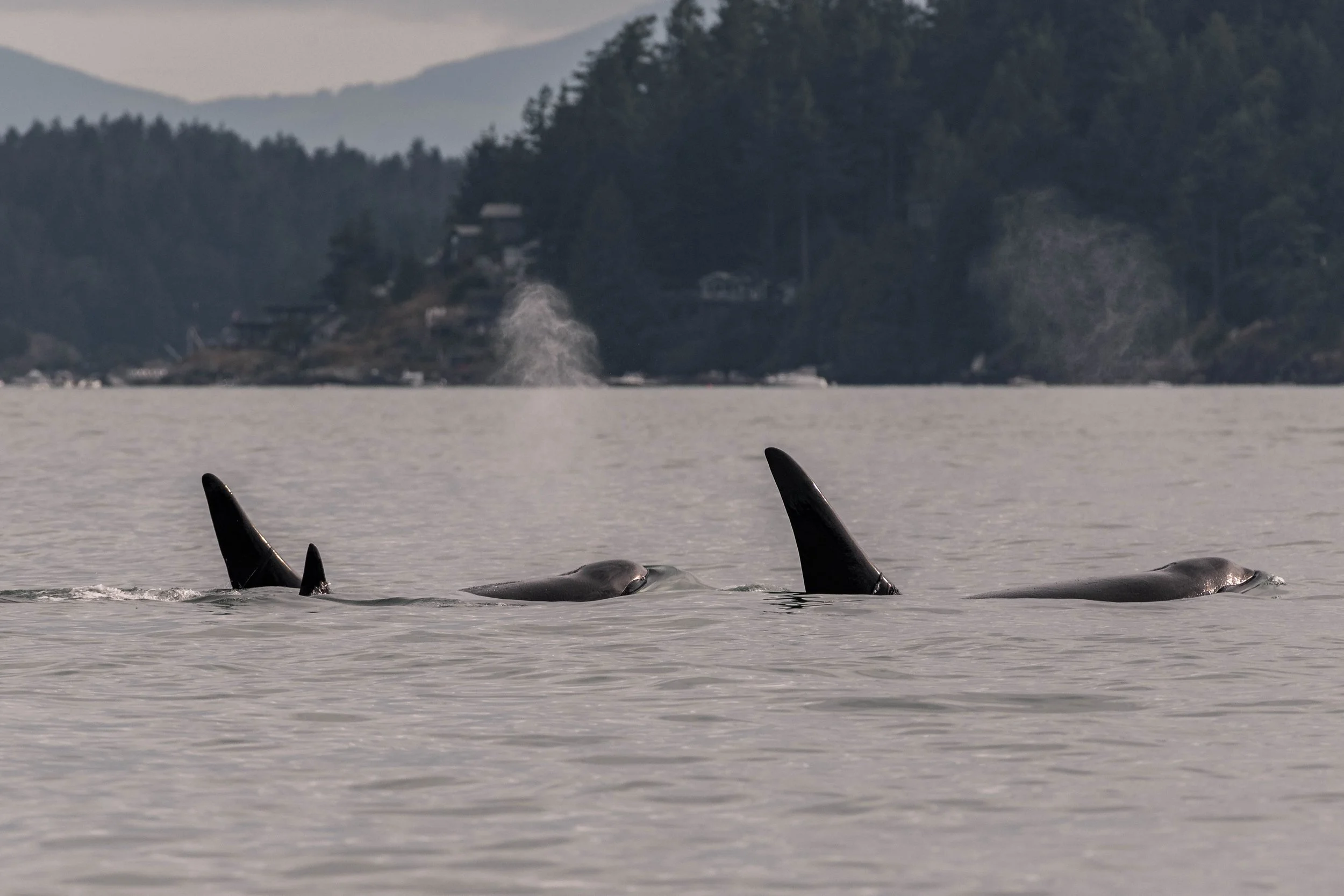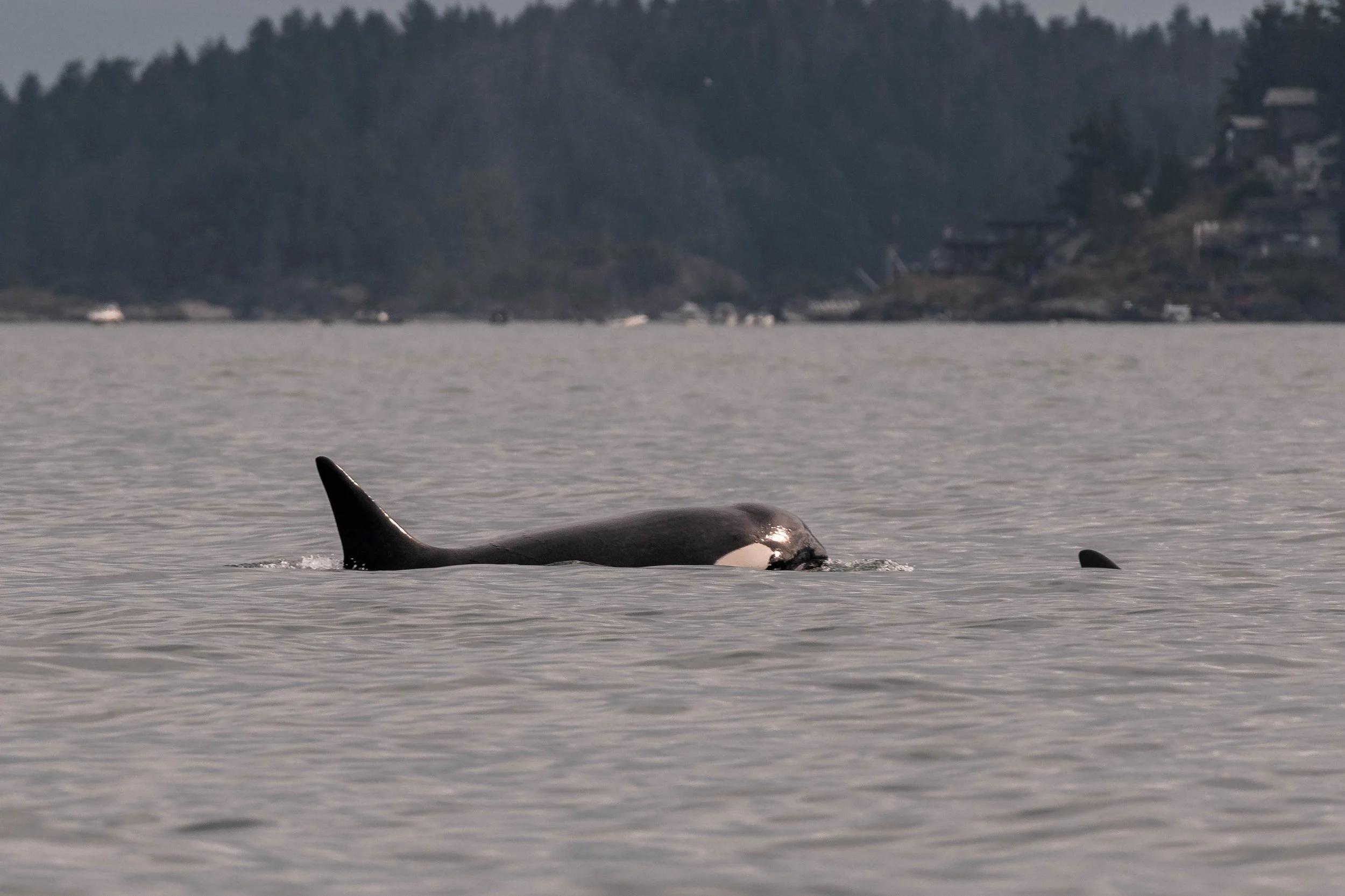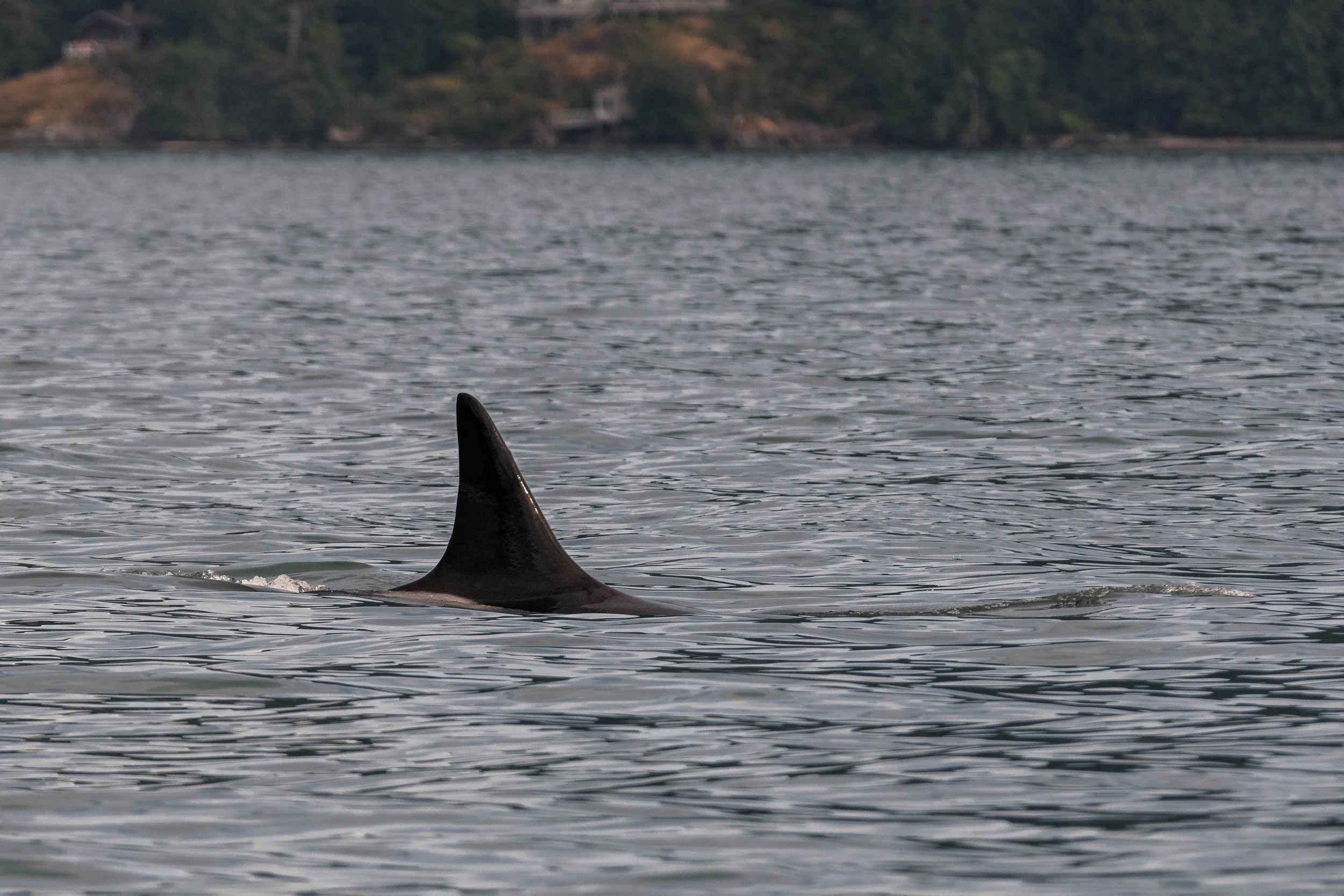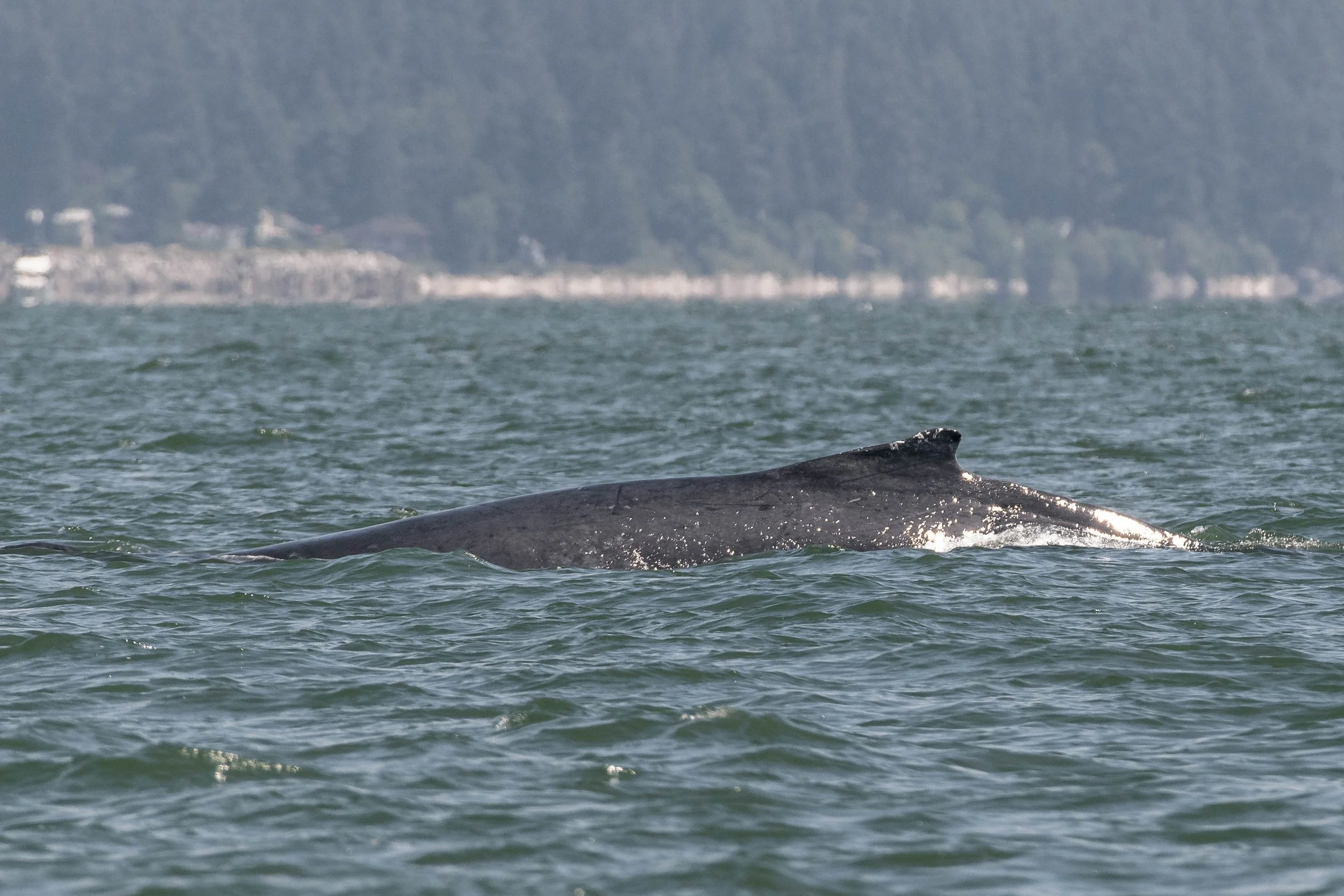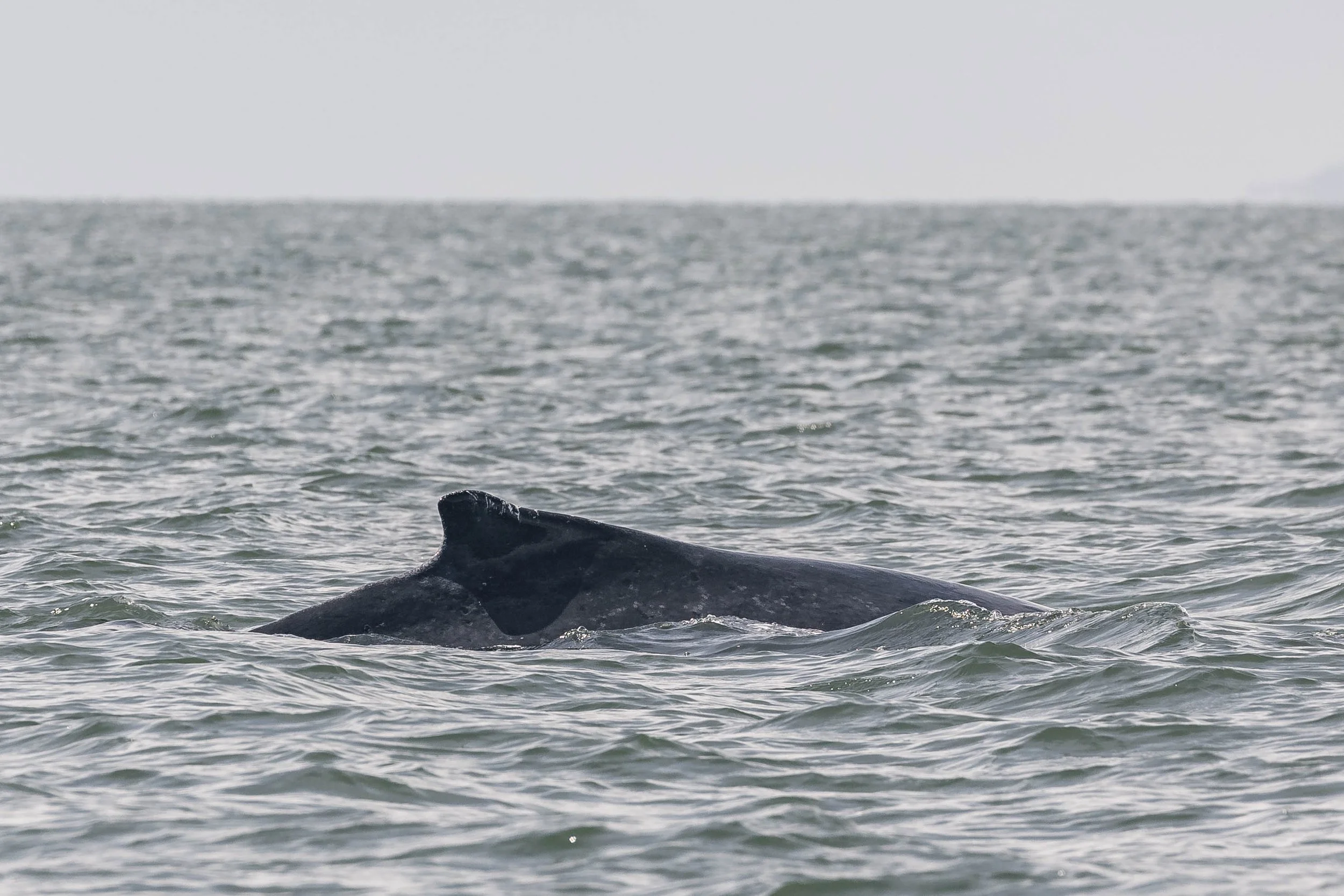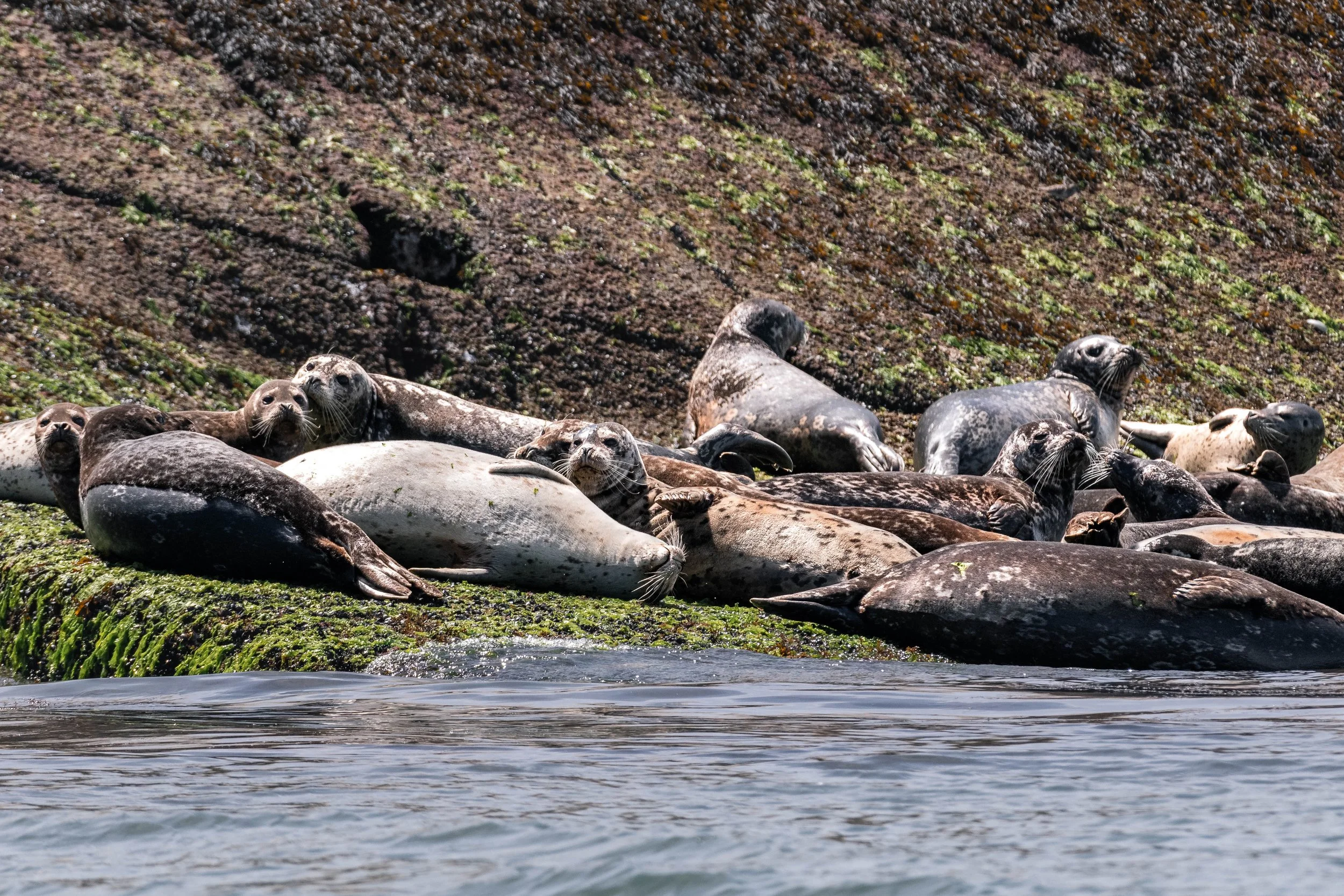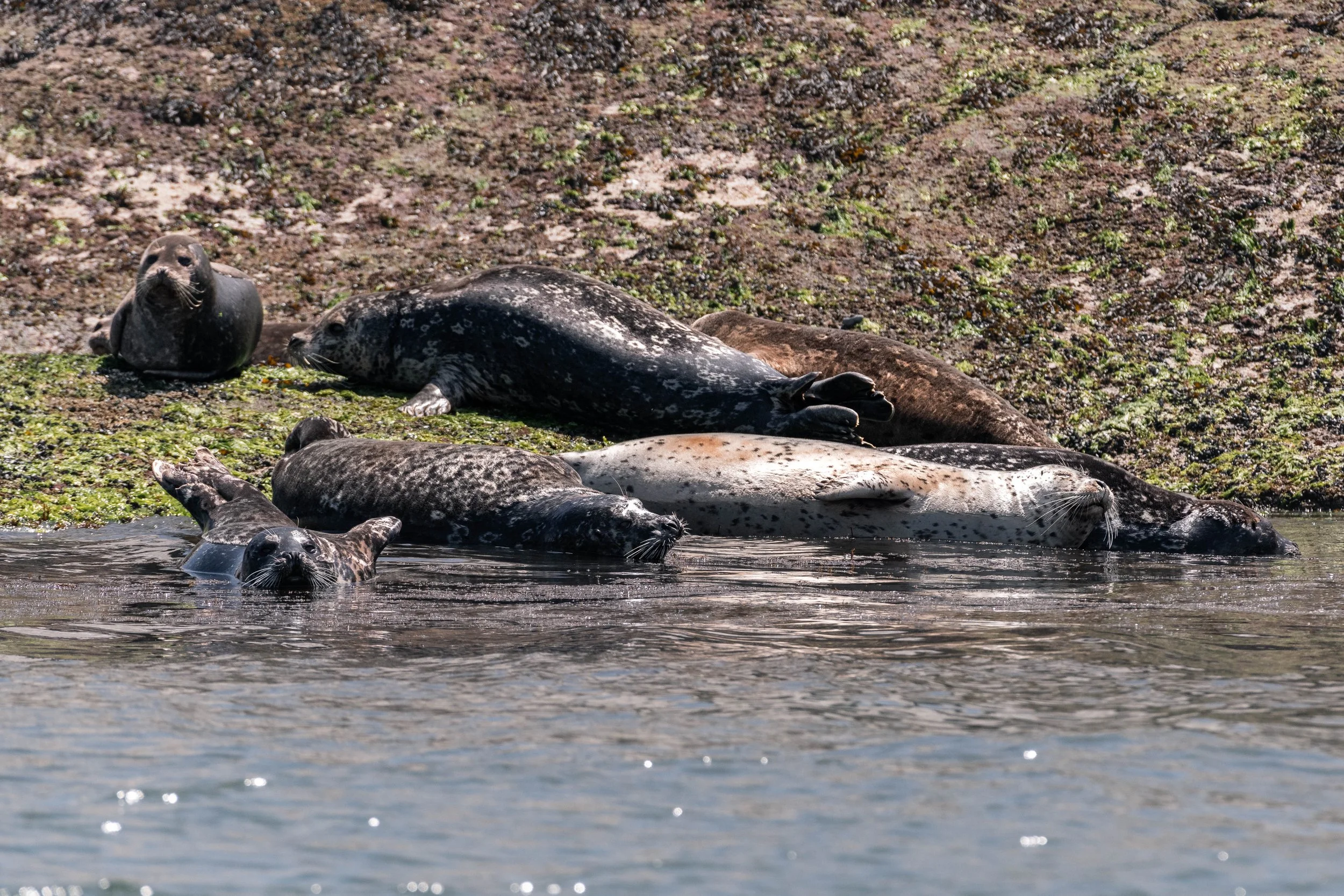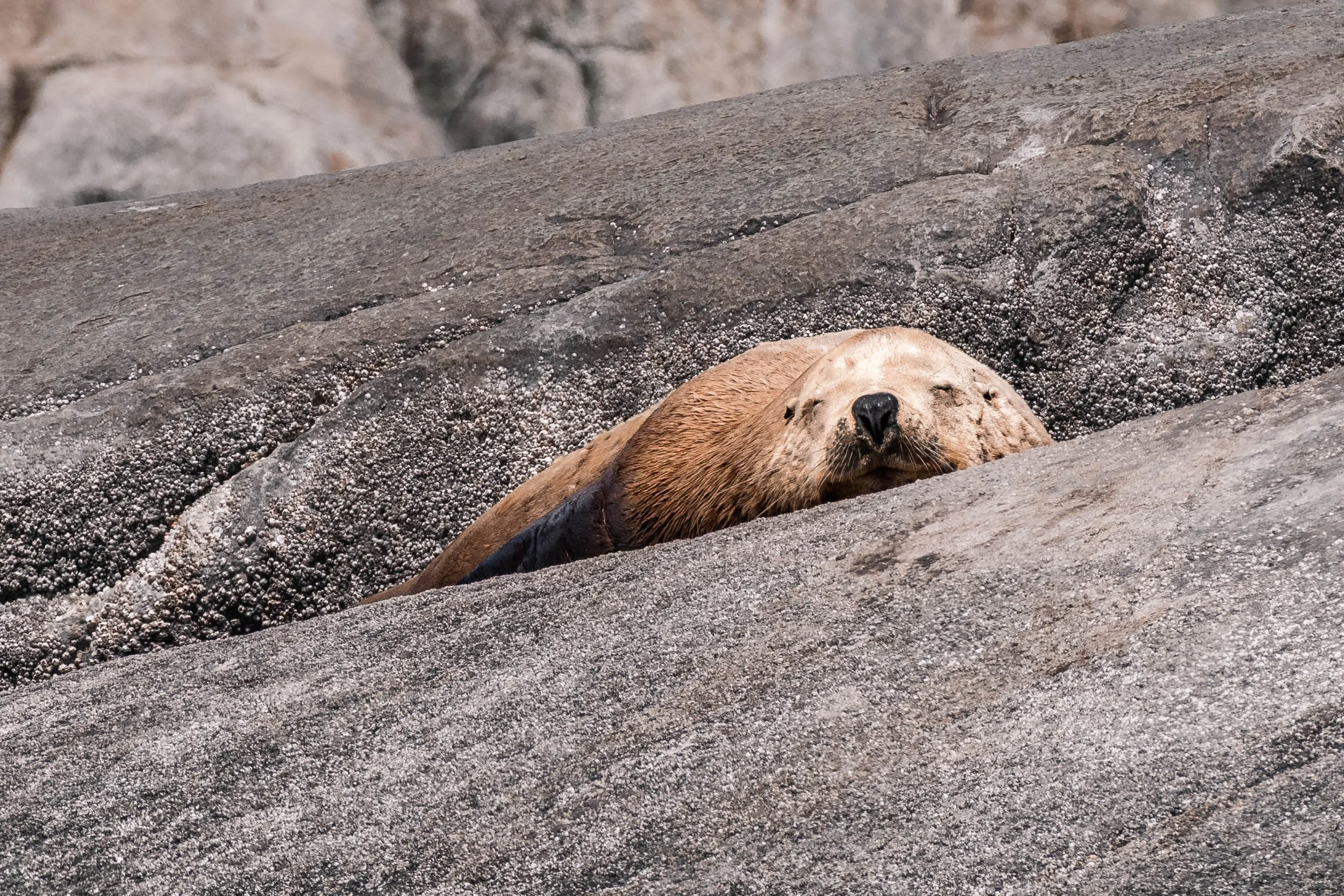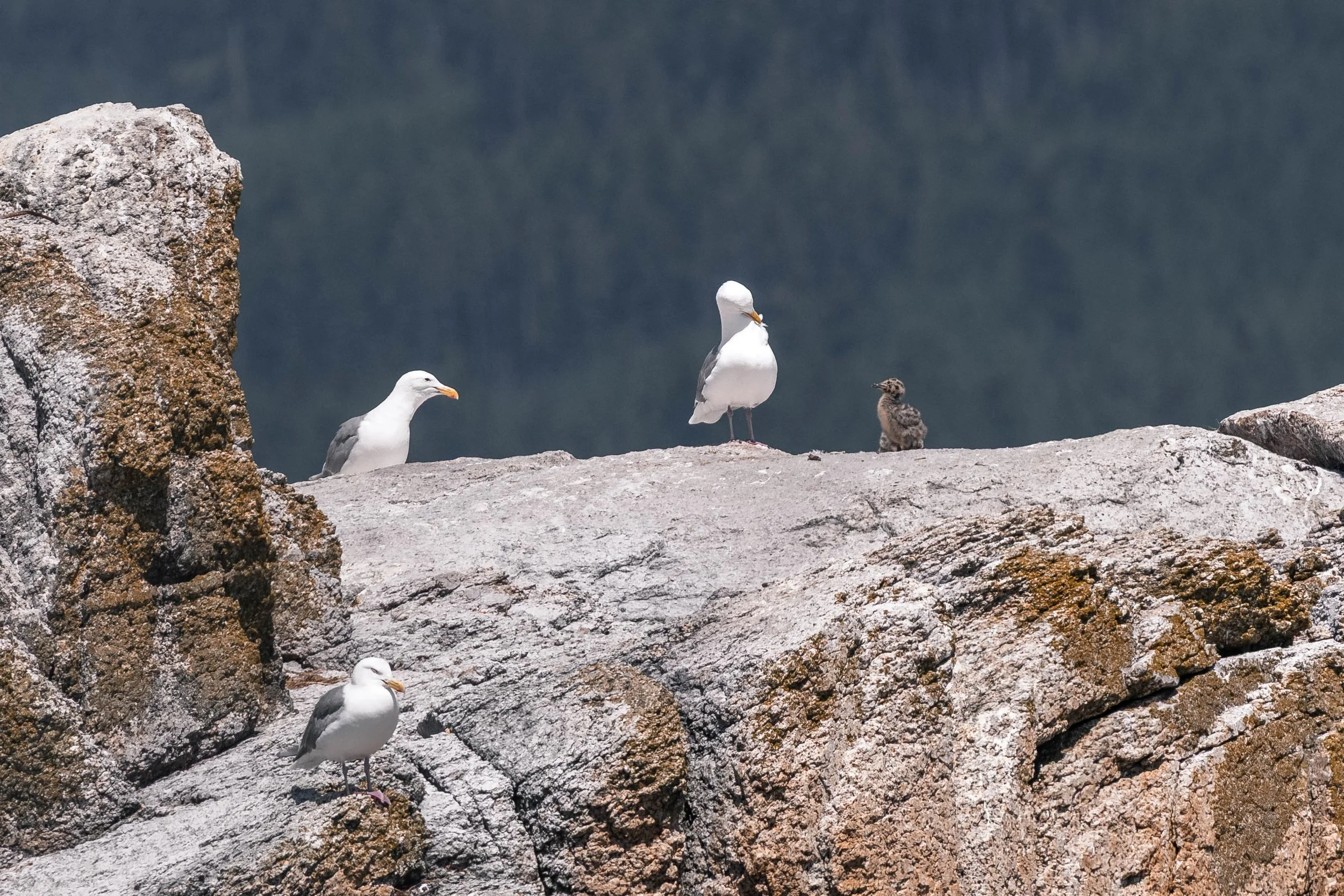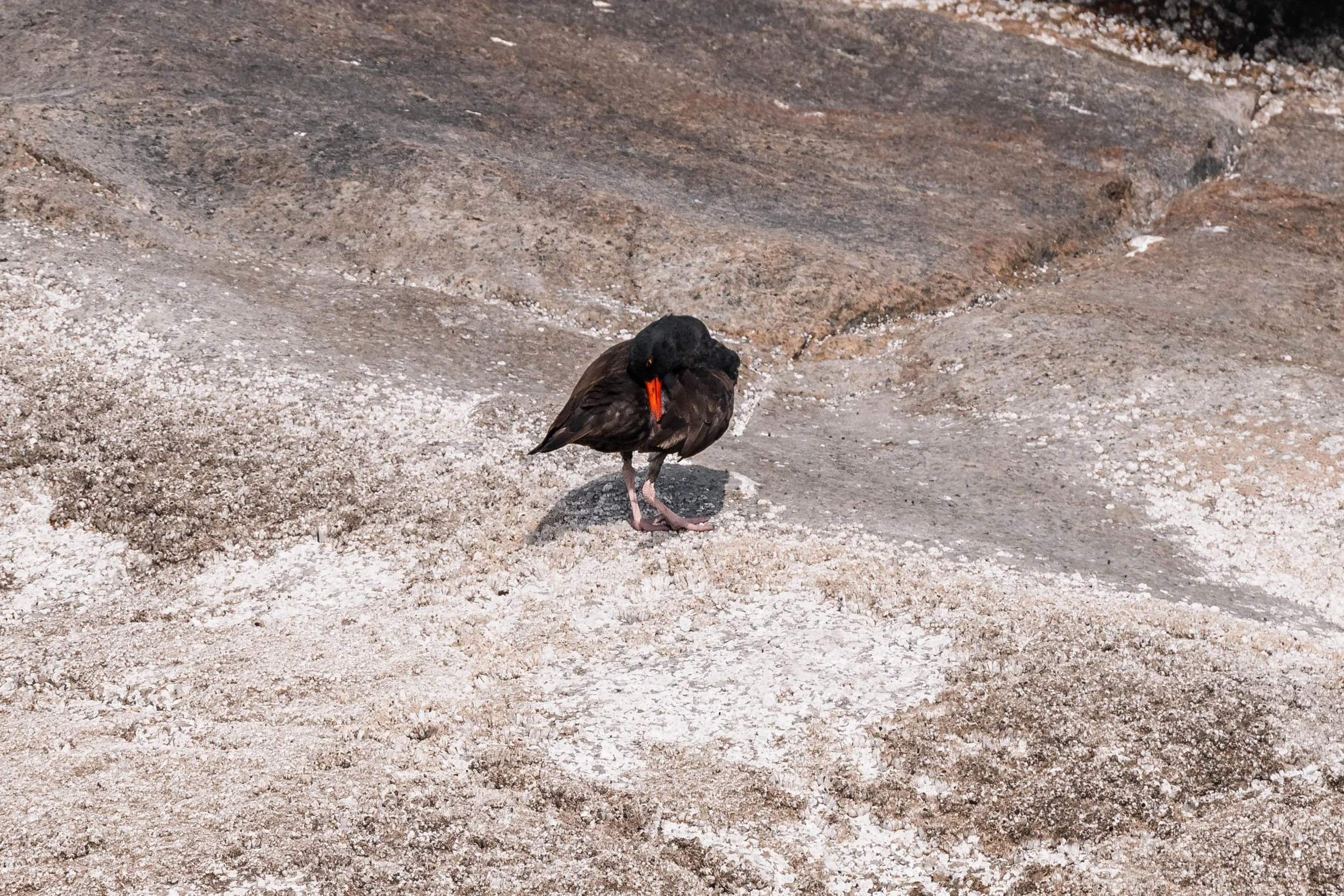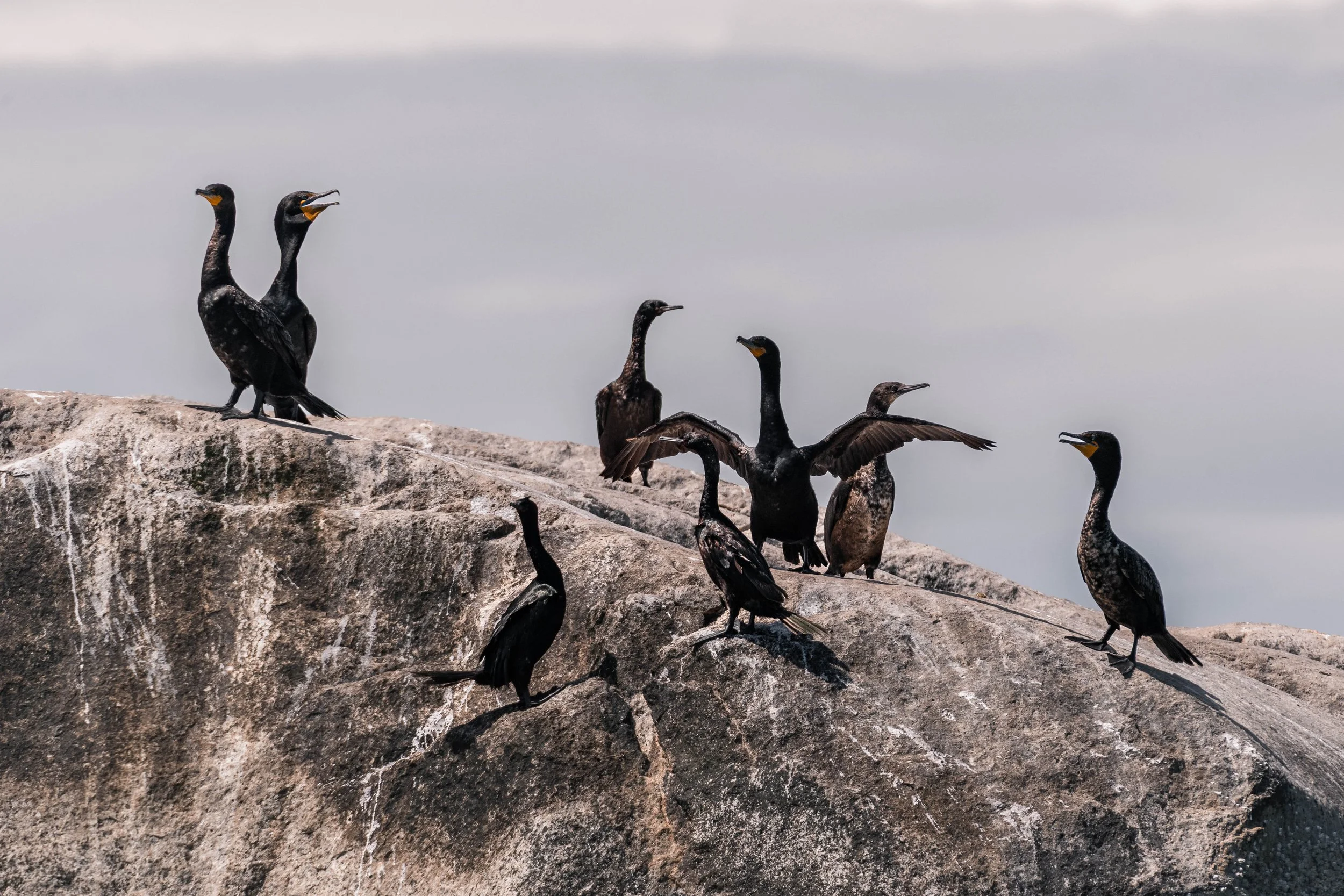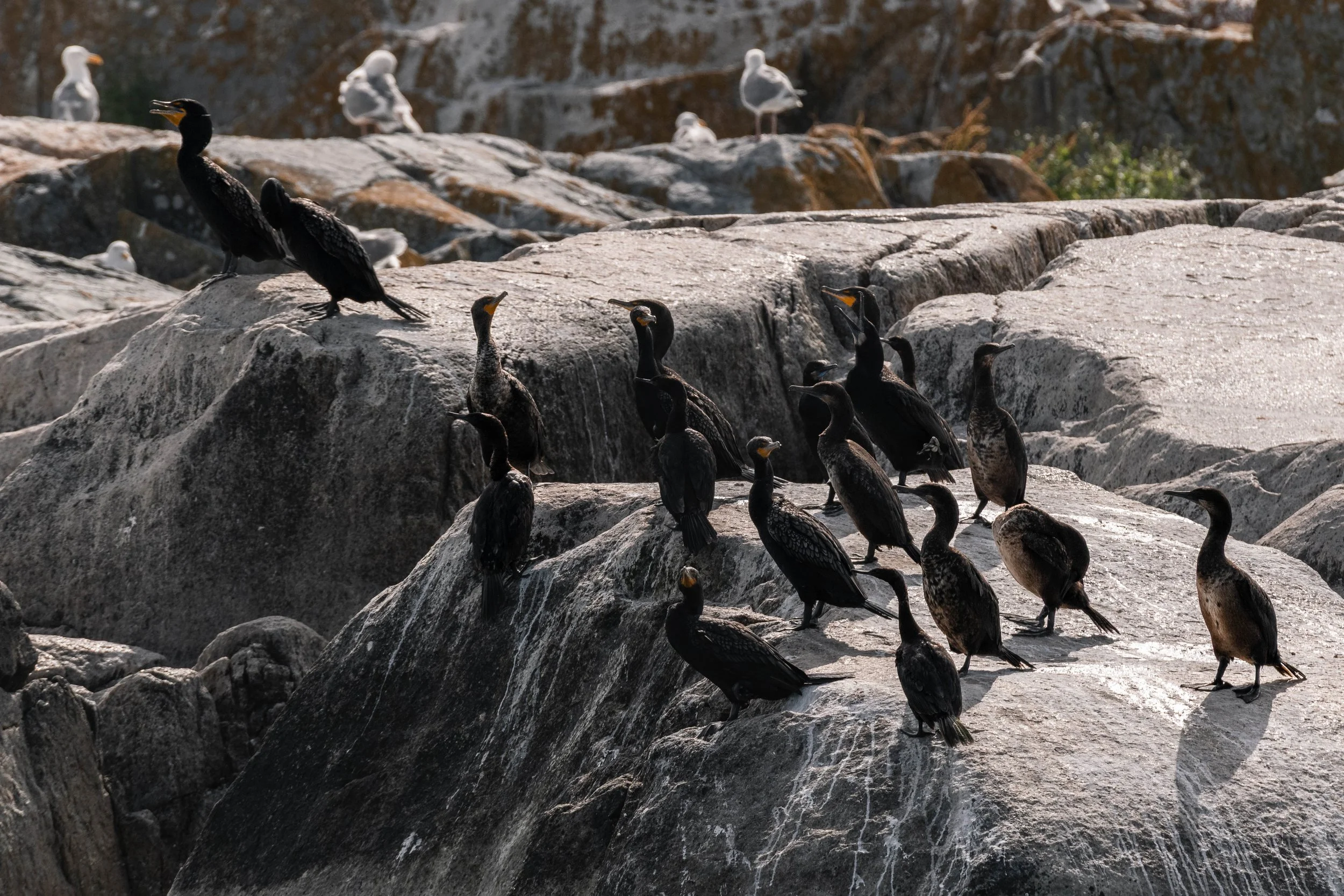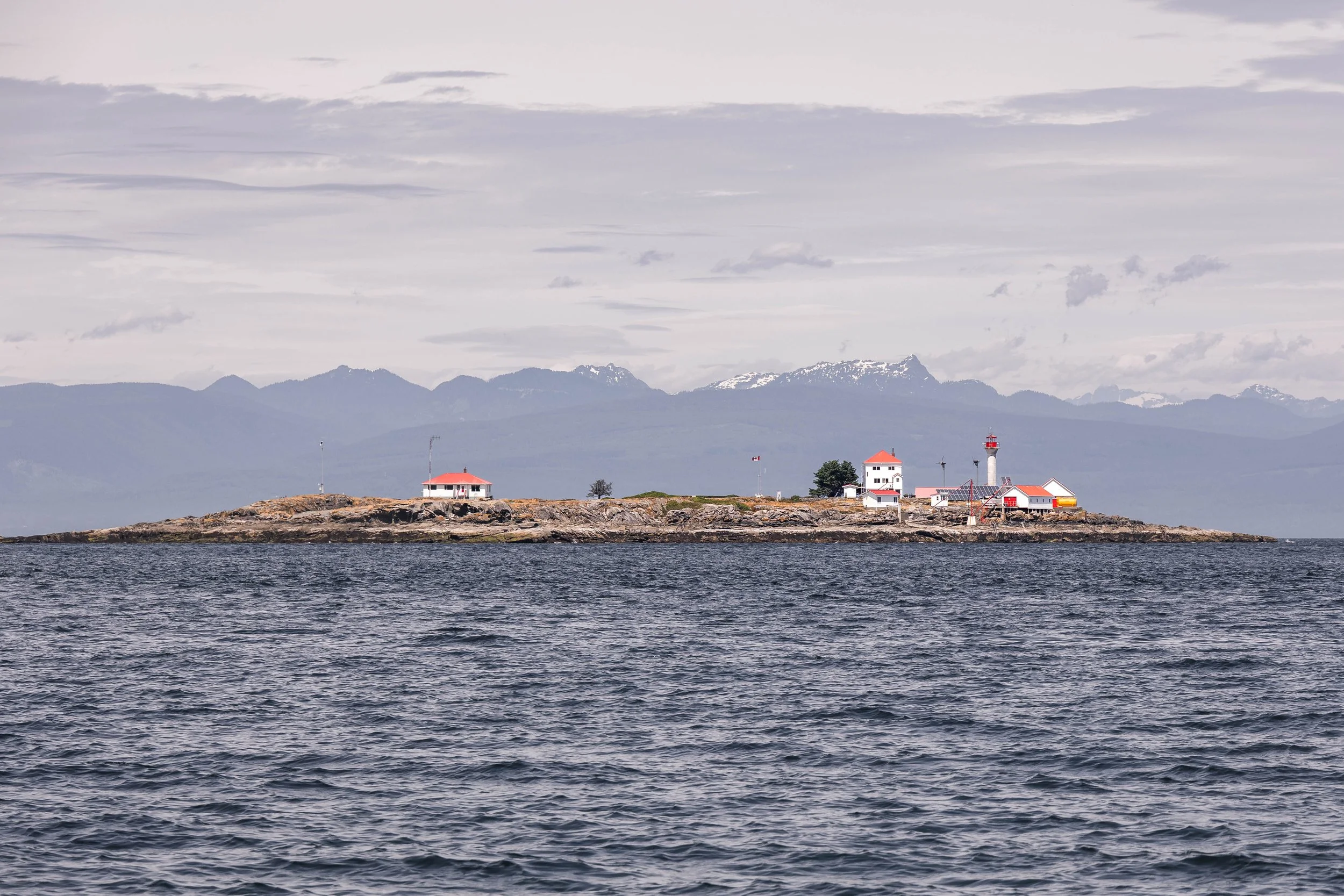July 11, 2025 - Double the species, double the fun!
Today, with the full fleet on the water, we set off under clear skies and calm seas, eager to explore the dynamic wildlife of the Salish Sea. Both our open vessel, Cascadia and our semi-covered boat, Kula, launched from Nanaimo, spreading out into the Strait of Georgia to begin our search.
It wasn’t long before we spotted a familiar blow in the distance, Graphite (BCX2077), a well-known humpback whale in these waters. Graphite was on the move, cruising steadily through the Strait. Humpbacks are known for their long-distance journeys, and even during the feeding season, they can travel over 100 kilometres in a single day as they search for dense patches of prey like krill or schooling fish. With their energy-intensive feeding strategies, including lunge-feeding, humpbacks must cover vast distances to fuel their massive 80,000-pound bodies.
As we followed alongside Graphite, another blow surfaced nearby, this time from an unknown humpback. We captured photos for ID and checked our onboard and regional catalogues, but no match was found. It’s always exciting to encounter a potential new addition to the population. Whether it’s a newcomer from another part of the Pacific or a young whale yet to be documented, every unknown sighting adds to the growing story of humpback recovery here in the Salish Sea. By the time we encountered Graphite again in the afternoon, his unknown companion from earlier had already moved on, vanishing into the vast blue expanse of the Strait. It’s a humbling reminder of just how wide-ranging and unpredictable these whales can be. Whether the unidentified humpback dove deep to forage or simply continued on a different route in search of richer feeding grounds, we may never know. These brief encounters leave us with more questions than answers-where did they come from, where are they headed, and will we see them again? It's part of what makes every whale watching trip so compelling: the cast is always changing, and the ocean holds more stories than we can ever fully uncover.
After spending some quality time with our two humpbacks, we headed south into the fjord-like beauty of Howe Sound. The cliffs and deep, cold waters here create an ideal habitat for marine mammals, and today, they delivered. Near the sound’s entrance, we found the T101s, a well-known family of Bigg’s (transient) orca, travelling through the area. These mammal-hunting orcas can travel over 100 kilometres in a single day as they search for seals, sea lions, and porpoises. The orca present were:
T101 Reef ♀ (≤1969)
T101A Rush ♂ (1993)
T101B Lagoon ♂ (1997)
There was a particularly poignant note to today’s sighting. For many years, Howe Sound was noticeably quiet of orca activity. It was here that Beardslee (T101A), the eldest son of Reef, passed away. His death was followed by what many believe to be a period of avoidance by his family, who seemed to steer clear of the region for some time. Orcas have incredibly strong bonds with their family members, especially with their mothers. In transient populations, sons in particular tend to remain close to their mothers for life, often relying on them socially and even for hunting success. Seeing the T101s return to these waters reminds us how emotionally complex and socially connected these animals are. After travelling alongside the T101s, we left them to continue their journey and began our trip back across to Nanaimo.
Along the way, we made a final stop at a place we call Stinky Rocks, a haul-out where a noisy and charismatic gathering of Steller Sea Lions entertained us. These massive pinnipeds can weigh up to a ton and are known for their loud, guttural roars and their impressive agility despite their size. Among the sea lions were dozens of gulls, striking black oystercatchers with their long red bills, colonies of cormorants perched high on rocky ledges, drying their wings and adorable harbour seals sunning themselves.
A few fun facts: black oystercatchers use their sharp bills to pry open mussels and limpets along the intertidal zone. Cormorants, unlike many seabirds, don’t have fully waterproof feathers, which is why you’ll often see them perched with wings outstretched to dry. Harbour seals, the most common marine mammal in the Salish Sea, can dive for up to 30 minutes and sleep underwater. And gulls? Well, they might seem common, but they’re clever opportunists with complex social behaviours and can live over 15 years in the wild!
From humpbacks to orcas, and sea lions to shorebirds, today was a reminder of the incredible biodiversity that calls the Salish Sea home. Every trip is different, and today, with the full fleet on the water, we were grateful to witness just how alive these waters truly are.
Photos by Aly Kohlman, Hayleigh Hilbert, and Jordan Robinson.
Graphite’s dorsal fin. Photo by Aly Kohlman, 10:30 AM.
Photo by Aly Kohlman, 3:30 PM.
T101A Rush. Photo by Aly Kohlman, 10:30 AM.
T101B Lagoon and T101A Rush. Photo by Aly Kohlman, 10:30 AM.
T101 Reef and T101B Lagoon. Photo by Aly Kohlman, 10:30 AM.
T101A Rush. Photo by Aly Kohlman, 10:30 AM.
Full family photo! T101A Rush (left), T101 Reef (middle), and T101B Lagoon (right). Photo by Aly Kohlman, 10:30 AM.
T101A Rush and T101B Lagoon. Photo by Aly Kohlman, 10:30 AM.
T101A Rush and his wiggly dorsal fin. Photo by Aly Kohlman, 10:30 AM.
T101B Lagoon, T101 Reef (tip of dorsal), and T101A Rush. Photo by Aly Kohlman, 3:30 PM.
T101A Rush. Photo by Aly Kohlman, 3:30 PM.
T101 Reef with her eyepatch above the surface. Photo by Aly Kohlman, 3:30 PM.
T101 Reef, the matriarch of the pod. Photo by Aly Kohlman, 3:30 PM.
Our Unknown’s dorsal fin. Photo by Aly Kohlman, 10:30 AM.
Our Unknown’s dorsal fin. Photo by Hayleigh Hilbert, 10:30 AM.
Our Unknown’s fluke. Photo by Hayleigh Hilbert, 10:30 AM.
Harbour Seals snoozing on the rocks. Photo by Aly Kohlman, 10:30 AM.
Sitting in the water enjoying the sunshine. Photo by Aly Kohlman, 10:30 AM.
Steller Sea Lions piled on top of eachother on the Halibut Bank ODAS buoy. Photo by Jordan Robinson, 10:30 AM.
Sleepily peeking at us as we cruise by. Photo by Jordan Robinson, 10:30 AM.
Don’t our Steller Sea Lions look so fuzzy! Photo by Hayleigh Hilbert, 10:30 AM.
A large male Steller Sea Lion snoozing nestled in the rocks. Photo by Aly Kohlman, 10:30 AM.
Scritch scratch! Photo by Aly Kohlman, 10:30 AM.
A bunch of surfing Gulls on a log! Photo by Aly Kohlman, 10:30 AM.
Baby Gulls don’t look like their parents - they look like speckled fuzzballs as seen here! Photo by Aly Kohlman, 10:30 AM.
A Black Oystercatcher preening itself. Photo by Aly Kohlman, 3:30 PM.
Sunning off on the rocks. Photo by Aly Kohlman, 10:30 AM.
Squawking away on the rocks. Photo by Aly Kohlman, 10:30 AM.
Look at how many Cormorants were up on the rocks! Photo by Aly Kohlman, 3:30 PM.
Entrance Island. Photo by Jordan Robinson, 10:30 AM.




